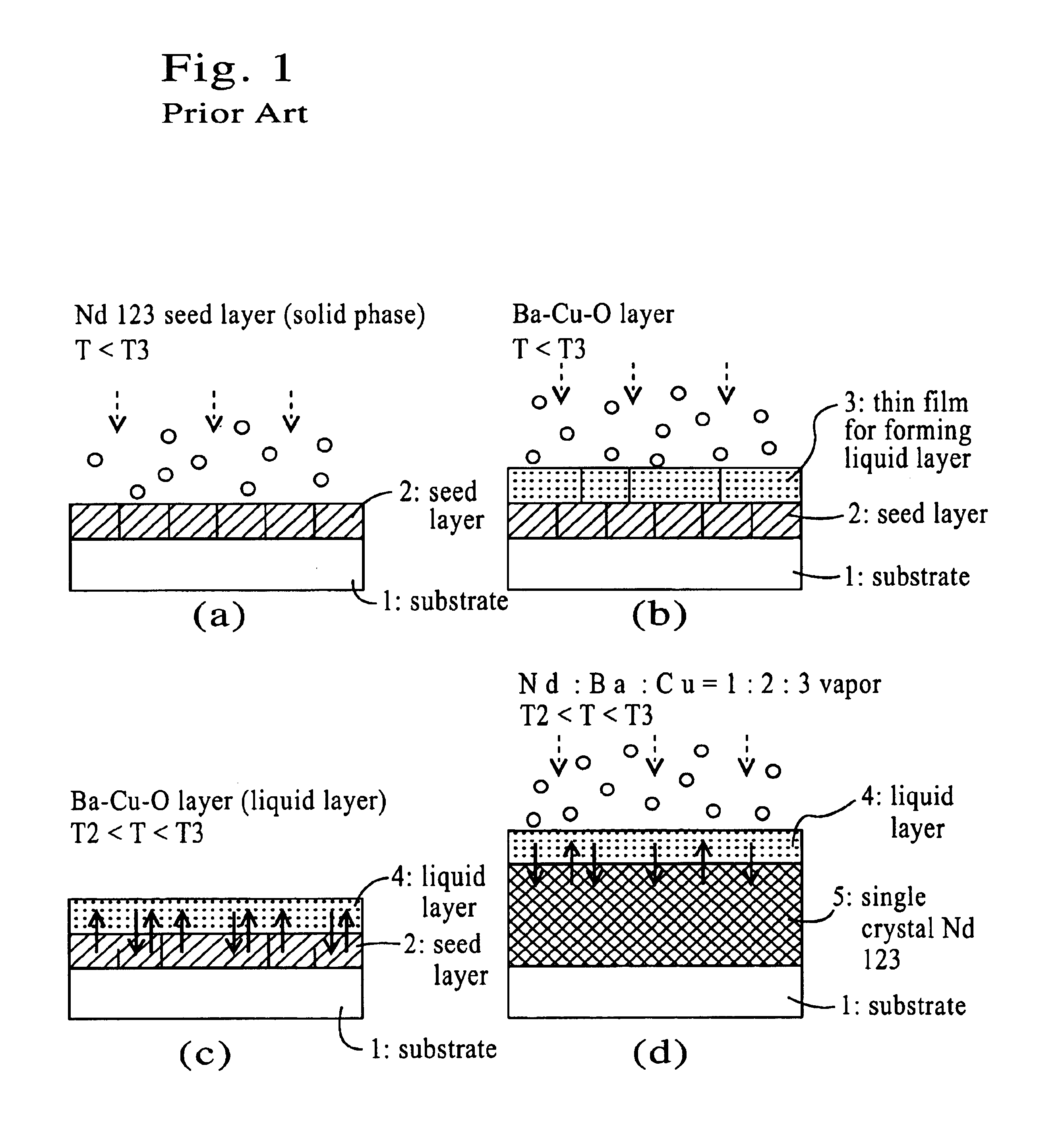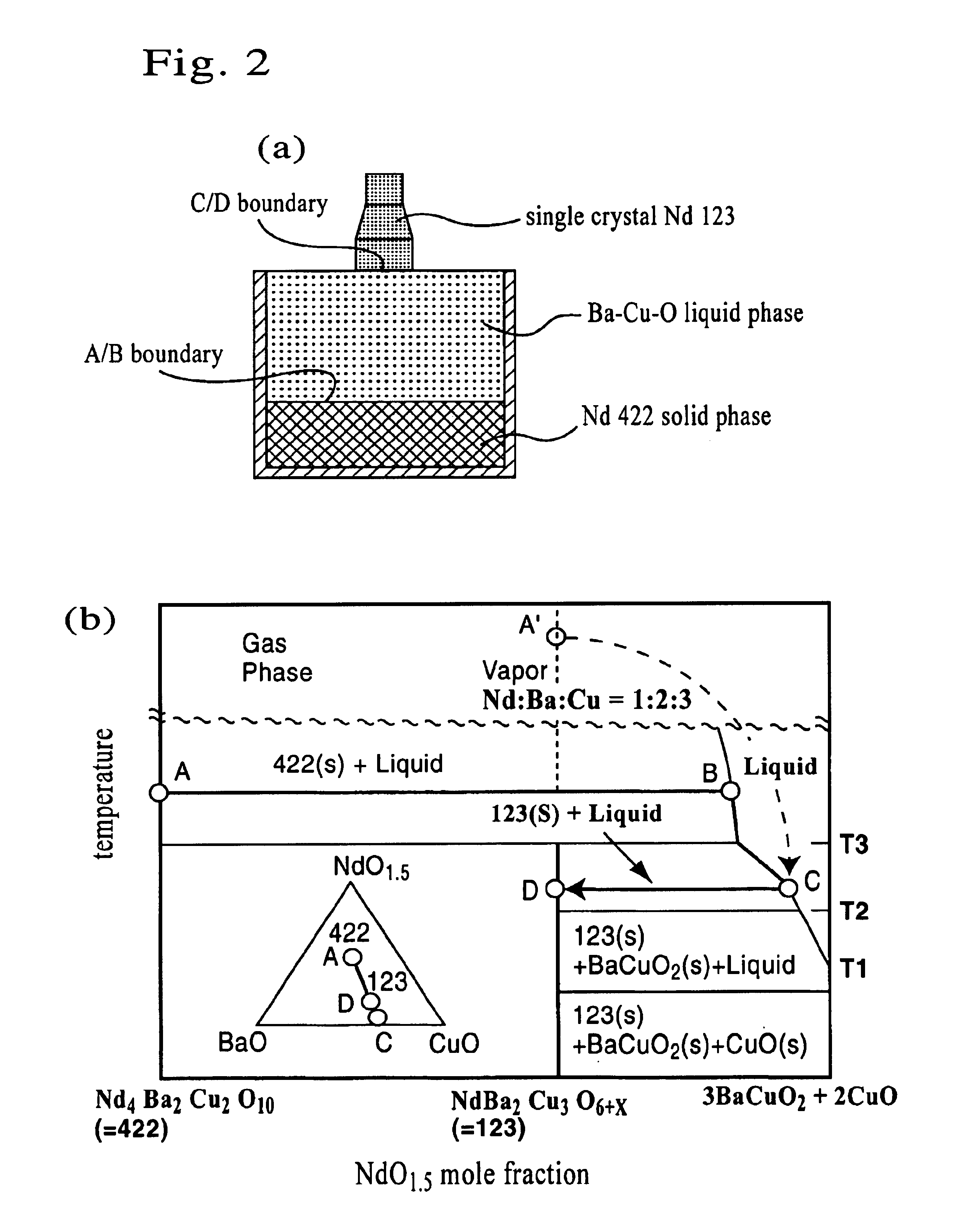Method for preparing single crystal oxide thin film
a thin film and single crystal technology, applied in the direction of polycrystalline material growth, superconductor devices, condensed vapors, etc., can solve the problems of inability to achieve desired film quality, inability to maintain optimal thermodynamic equilibrium at the boundary of liquid and gas phases, and difficulty in conventional oxide thin film fabrication methods to provide. , to achieve the effect of excellent crystallinity and low melting poin
- Summary
- Abstract
- Description
- Claims
- Application Information
AI Technical Summary
Benefits of technology
Problems solved by technology
Method used
Image
Examples
example
Example 1
[0050]One example will be described in which an NdBa2Cu3O7 superconducting thin film was prepared using a conventional pulsed laser deposition apparatus in accordance with the method of the present invention. SrTiO3 (100) was used as a substrate. A sintered polycrystalline having the same composition and structure as a superconducting oxide to be formed was used as a target for depositing a seed layer and a film layer. This sintered polycrystalline was obtained by mixing RE2O3 powder, BaF2 or MaCO3 powder and CuO powder in conformity with the composition of the film layer, and heating the mixed powder at 1000° C. or more in a conventional electric furnace.
[0051]A mixed powder sintered body having the ratio of Ba:Cu=3:5 was used as a target for depositing an oxide layer for forming a liquid layer. The mixed powder sintered body was obtained by mixing plural kinds of powders, for example BaF2 or BaCO3 powder and CuO powder, to satisfy the ratio of Ba:Cu=3:5, and heating the m...
example 2
[0073]An NdBa2Cu3O7 film was formed in the same manner as that of Example 1 excepting that MgO (001) was used as a substrate.
[0074]FIG. 7 shows an M-T curve according to SQUID data. FIG. 8 shows a temperature dependence of the resistivity. It is apparent that the thin film obtained in Example 2 is also a superconducting film. While the thin film of Example 2 has a crystallinity slightly inferior to that of Example 1 using SrTiO3 (100), oxygen is readily introduced thereinto because of the lower crystallinity, and the width of the superconducting transition temperature is sharper as shown in FIG. 7.
PUM
| Property | Measurement | Unit |
|---|---|---|
| partial pressure | aaaaa | aaaaa |
| crystal-grain size | aaaaa | aaaaa |
| temperature | aaaaa | aaaaa |
Abstract
Description
Claims
Application Information
 Login to View More
Login to View More - R&D
- Intellectual Property
- Life Sciences
- Materials
- Tech Scout
- Unparalleled Data Quality
- Higher Quality Content
- 60% Fewer Hallucinations
Browse by: Latest US Patents, China's latest patents, Technical Efficacy Thesaurus, Application Domain, Technology Topic, Popular Technical Reports.
© 2025 PatSnap. All rights reserved.Legal|Privacy policy|Modern Slavery Act Transparency Statement|Sitemap|About US| Contact US: help@patsnap.com



